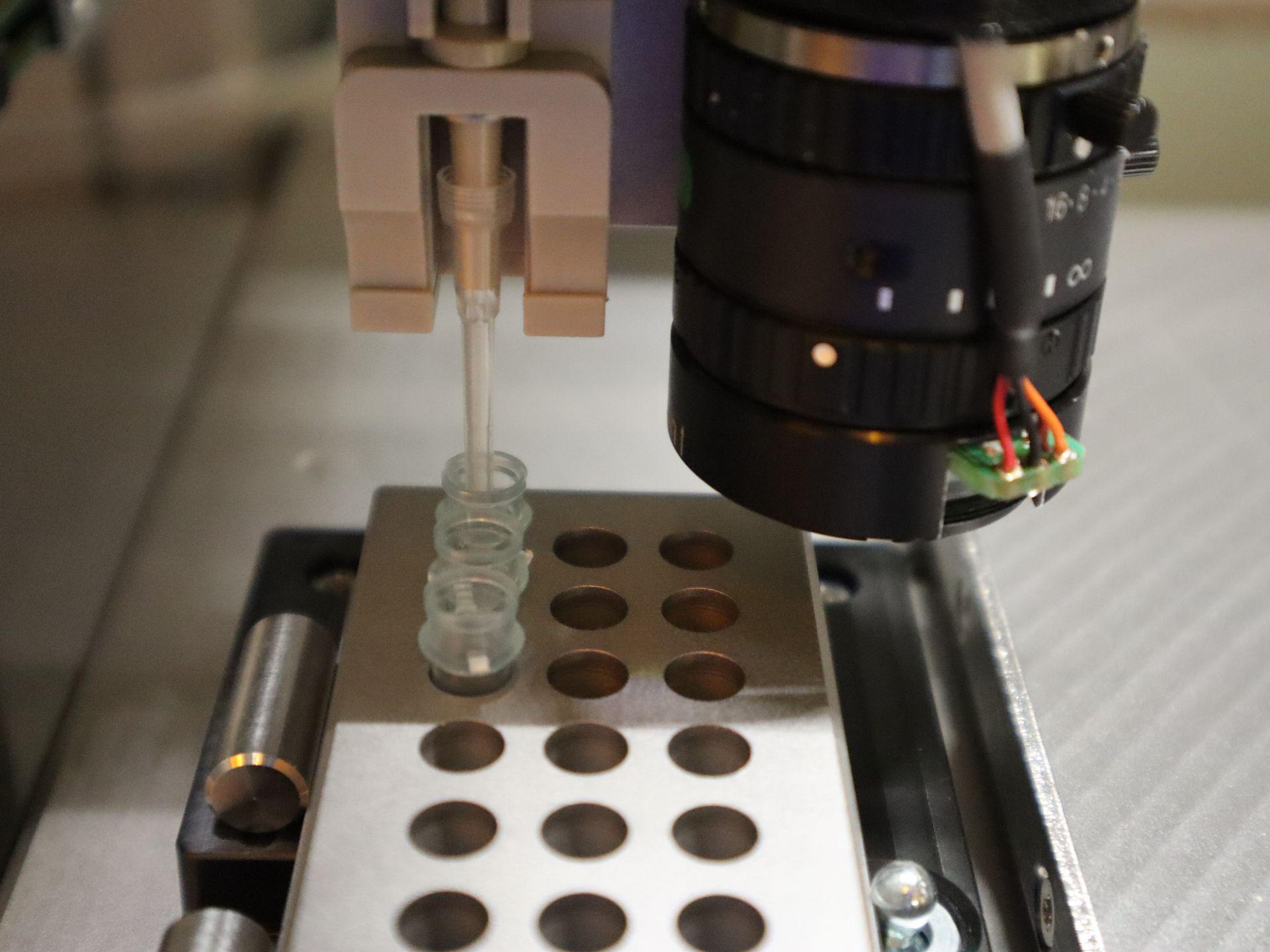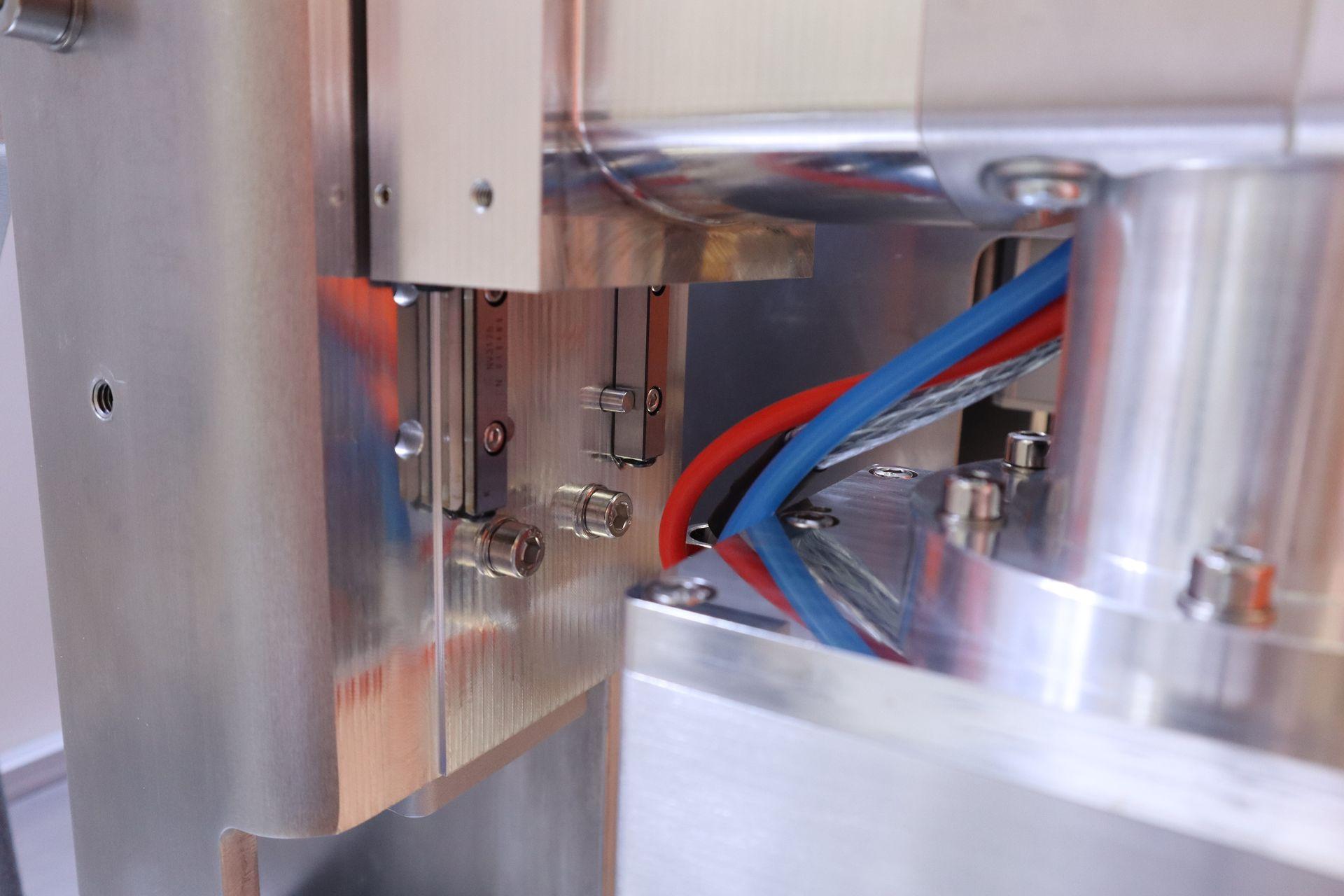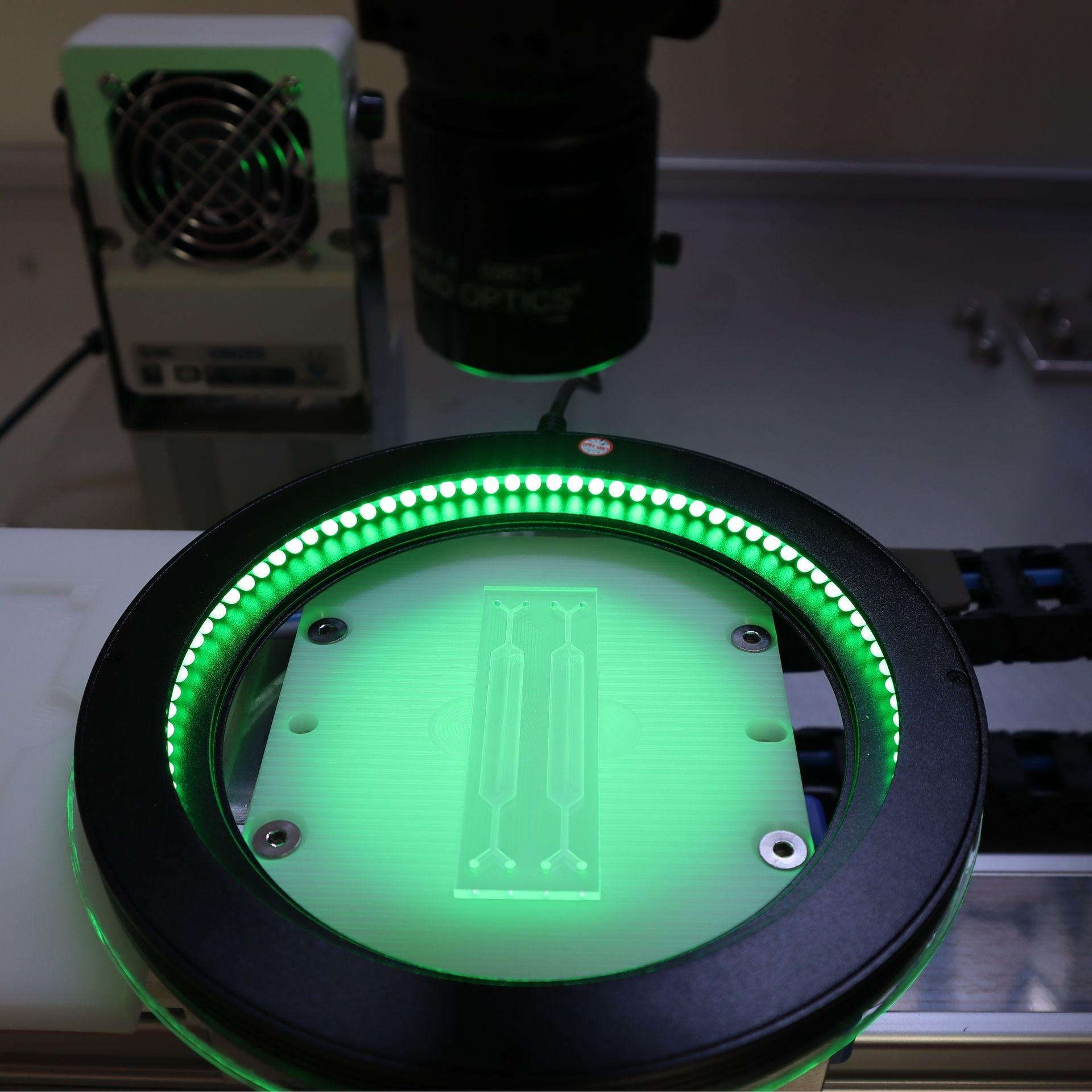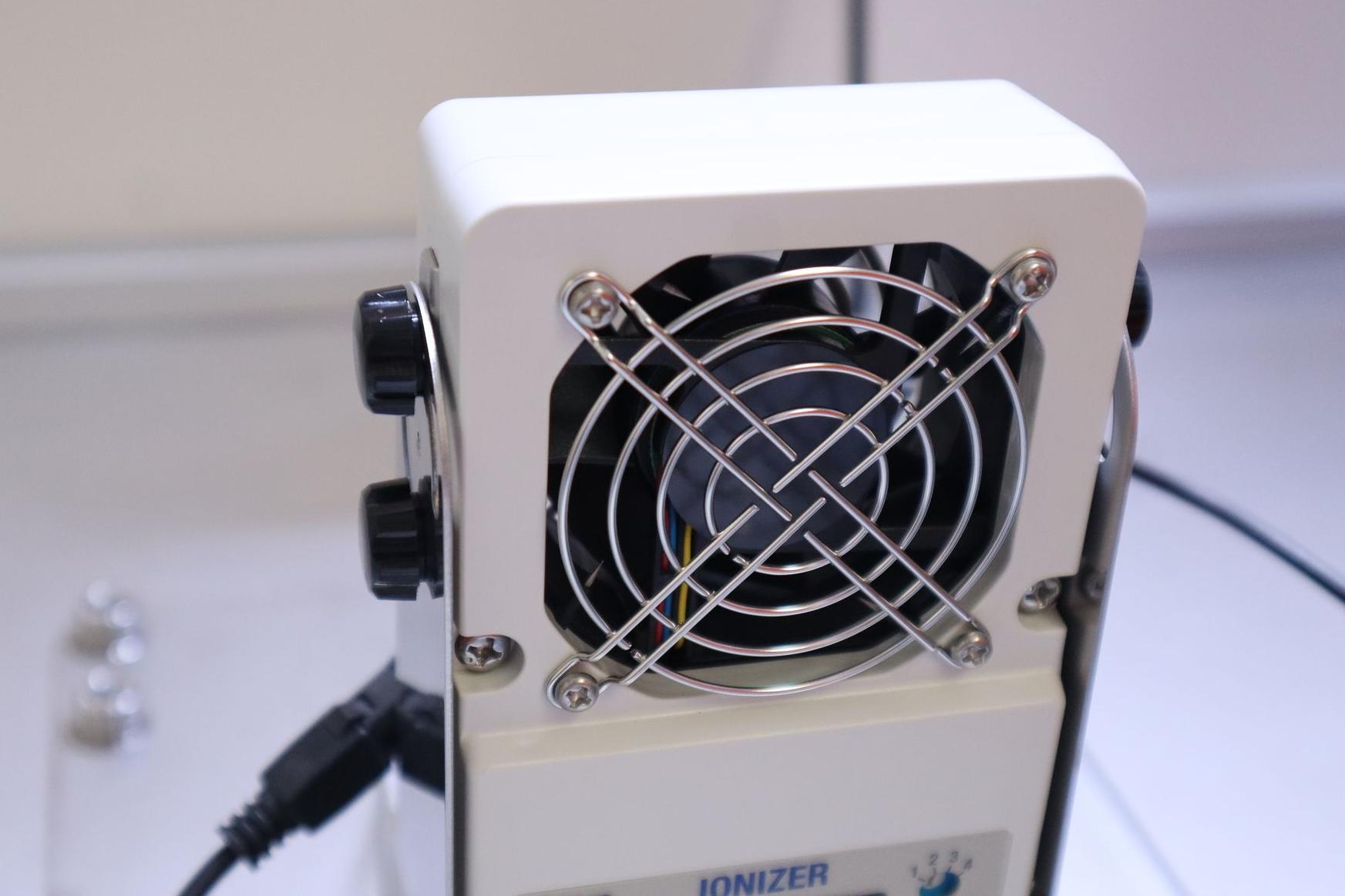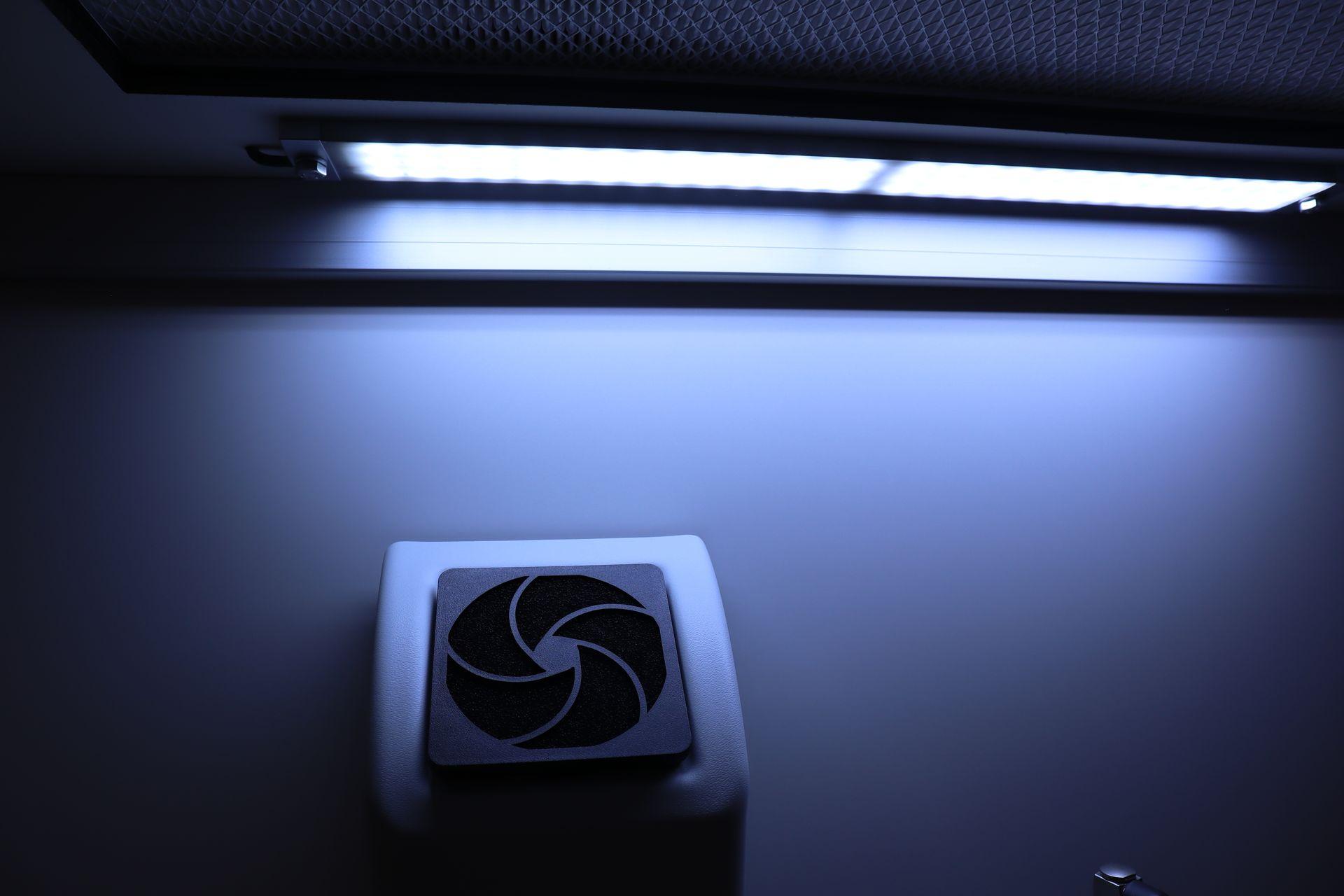Automated Production
Standardized Modules
Microfluidic devices come in a variety of materials and sizes, each customized for specific applications and requiring distinct manufacturing processes. To simplify manufacturing, we offer a range of standardized modules that can be seamlessly combined into a standalone production machine. This modular approach allows for a quick start to volume production while minimizing both lead time and costs.

Fluid deposition is a crucial step before assembly, involving the precise placement of droplets within micro-scale channels, chambers, or other structures on a microfluidic device. Applications range from the application of reagents to surface modifications or functional inks.
With non-contact dispensing options ranging from picoliters up to microliters, there is always a suitable solution.To ensure consistent application, the standalone production machine can be equipped with an integrated fluid deposition module, enabling fluid deposition directly within the manufacturing cycle.
At the core of the assembly process is bonding, with multiple bonding modules available to match the optimal technology for each application, including our direct bonding technology, UV adhesive bonding, and ultrasonic welding. The bonding module ensures accurate alignment and strong adhesion of microfluidic components, while preserving microstructure integrity. It offers precise control over bonding conditions, enabling the automated bonding of different materials and combinations.
By integrating vision systems, you can automate quality inspection and reduce human error. This module includes high-resolution cameras, custom industrial lighting, and advanced image processing algorithms, allowing for precise monitoring of critical quality parameters like surface defects, alignment accuracy, coating application, and particle contamination. Designed as a standalone module, the vision system can be used before or after any production step to ensure consistent quality throughout the manufacturing process.
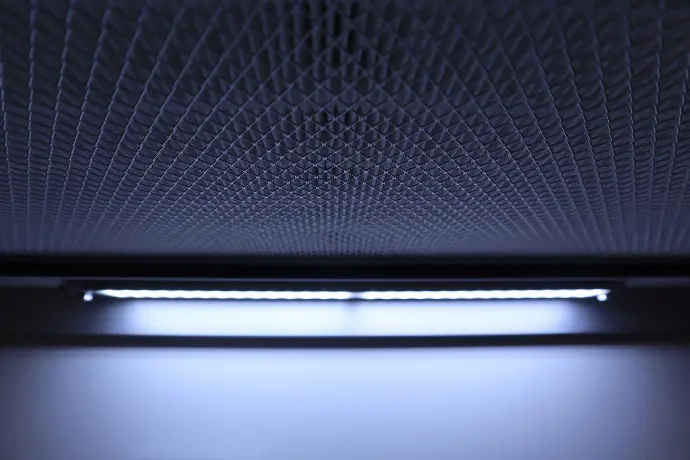
Environmental Control
Manufacturing medical products requires strict control over environmental conditions to maintain quality and safety. With our range of filter options, we can ensure the right environmental conditions for your application, guaranteeing optimal performance and reliability.
With a variety of environmental control options, the standalone machine can be integrated into any lab workspace, production facility, or cleanroom.
Minimize particle contamination by addition of a powerful filter fan unit. Equipped with G4 and HEPA filters, the filter unit ensures a continuous supply of clean, contaminant-free air into the machine cabinet.
Reduce surface static by incorporating an ionizing fan to neutralize static charges, aiding in coating applications and preventing dust attraction.
Achieve purified air by adding a UV sterilization system. As air passes through the system, UV-C light targets and inactivates microorganisms, reducing airborne pathogens and enhancing air quality.
Additional Automation
Ideal for small series and volume production, the standalone machine combines automated manufacturing processes—such as fluid deposition, bonding, and quality inspection—with manual loading and unloading of components. This combination ensures speed and precision for critical manufacturing processes, while maintaining excellent operator control. The system minimizes human interaction and errors, requiring an operator only for loading and unloading.
For enhanced efficiency, a pick-and-place robot can be added for tray feeding, allowing the operator to focus on other tasks.
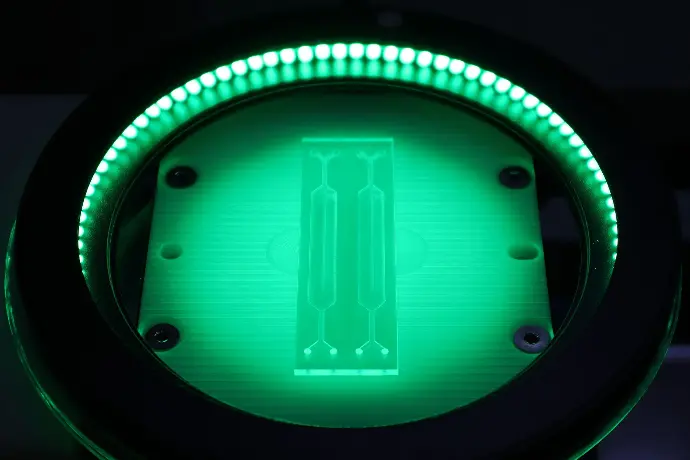
Incorporating automation for part loading and unloading further reduces human interaction, boosts production output, and minimizes errors. Instead of manual loading, efficiency can be improved with tray feeding using pick-and-place robots. Alternatively, a conveyor belt system can be used to integrate the standalone machine into an existing production line. Fully automated machinery is commonly used for medium to high volume production.
The full manufacturing cycle can be completed by incorporating automated sealing, labeling, and packaging modules, each customized to the product’s size, shape, and packaging needs. Sealing modules package individual products in bags, pouches, or other materials, ensuring secure protection during transport. Labeling modules automate the application of product labels, ensuring traceability and compliance with regulatory requirements. Packaging modules handle the final step, efficiently grouping products for distribution. These modules streamline the production process, reduce manual labor, and accelerate throughput, ensuring that finished products are market-ready with a professional presentation.
